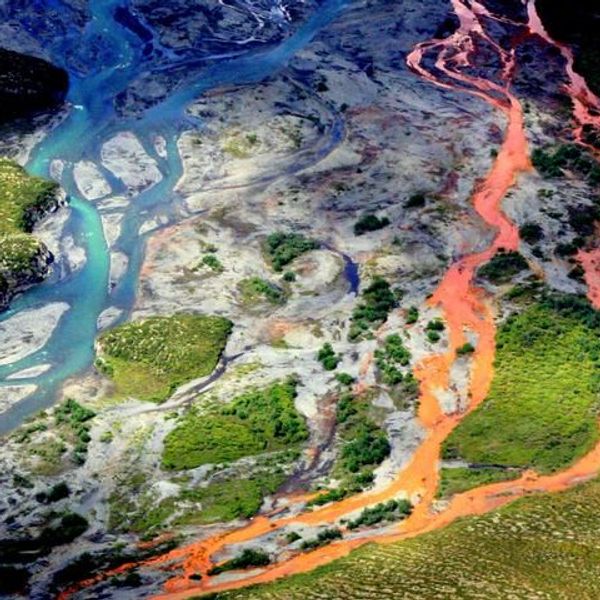From seabirds to whales to antelopes to starfish, animal die-offs across the globe are raising alarm about the deadly impact of climate change on the world's ecosystems and their vulnerable inhabitants.
An estimated 8,000 black-and-white common murres were found dead on the beaches of Alaska's Prince William Sound over the weekend, joining thousands more that have washed up on beaches from California to the Gulf of Alaska over the past year. The seabirds, who appear to have died of starvation, "are indicators of what is happening in the marine ecosystem," the U.S. Fish and Wildlife Service (USFWS) wrote in a press release (pdf) on the matter.
While the USFWS notes that "seabird mortality events occur occasionally, especially after a hard winter, and causes are often difficult to determine," it also points out that the "current die-off, however, appears to be unusually large."
Meanwhile, the BBC reports that at least 45 pilot whales have died in the southern Indian state of Tamil Nadu, after more than 80 were stranded on the shore at Tuticorin. M. Ravi Kumar, the top government official in the port town, told the Associated Press that the whales began washing up on beaches on Monday evening, and that while 36 of the large mammals had been rescued and pushed back out to sea, they appeared disoriented and kept coming back.
These heart-wrenching stories add to a list of similar incidents--a massive starfish stranding on Australia's Moreton Island; the mysterious die-off of endangered antelopes last spring in Central Asia, which killed more than half of the entire species in less than a month; drought in the Western U.S. transforming stretches of river into a "mass graveyard for baby salmon;" and historic coral bleaching events that degrade and erode the structure of living reefs.
A study published last year in the Proceedings of the National Academy of Sciences, in fact, showed that mass die-offs of birds, fish, and marine invertebrates are growing increasingly frequent and severe, hiking at a rate of approximately one major mortality event per year over the past seven decades.
"Incidents like these are often mysteries to be unraveled, with scientists sorting through various explanations--hunger, habitat loss, disease, disorientation--for the mass deaths," Sarah Kaplan wrote at the Washington Post on Wednesday. "But in a swath of recent cases, many of the die-offs boil down to a common problem: the animals' environments are changing, and they're struggling to keep up."
In the case of the seabirds, for example, a possible explanation is that the birds' usual food supply--the schools of herring and other small fish typically found near the coast--has itself been decimated by warming oceans or this year's extreme El Nino weather pattern.
In the case of the saiga antelopes last year, the WaPo reports, researchers believe "an abnormally wet spring induced by climate change transformed some normally harmless pathogens that ordinarily live in the saigas' guts. The suddenly lethal pathogens swept through Kazakhstan's herds. Once sickened, the animals died in a matter of hours."
Citing the PNAS study, Kaplan concludes: "These die-offs matter not just because of the inherent value of the creatures involved...but because whole ecosystems may depend on that species to survive."


